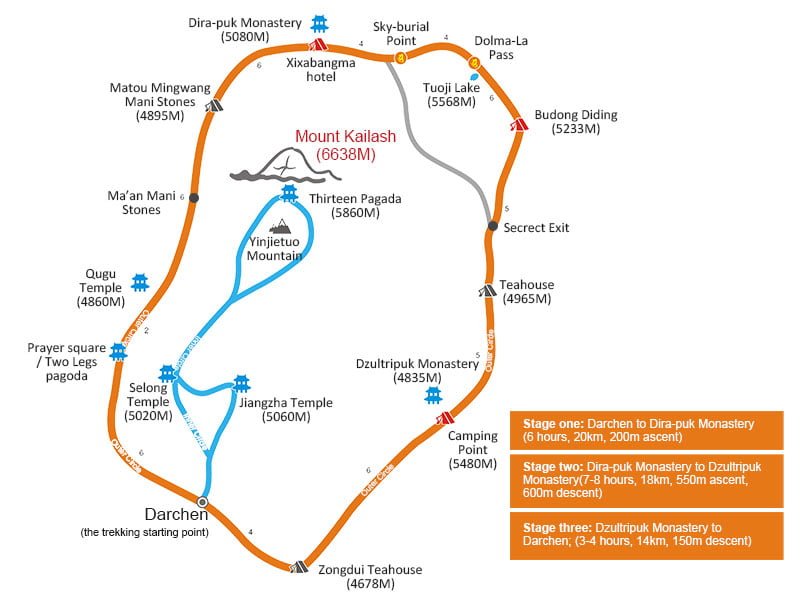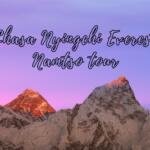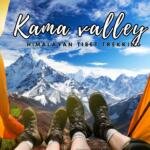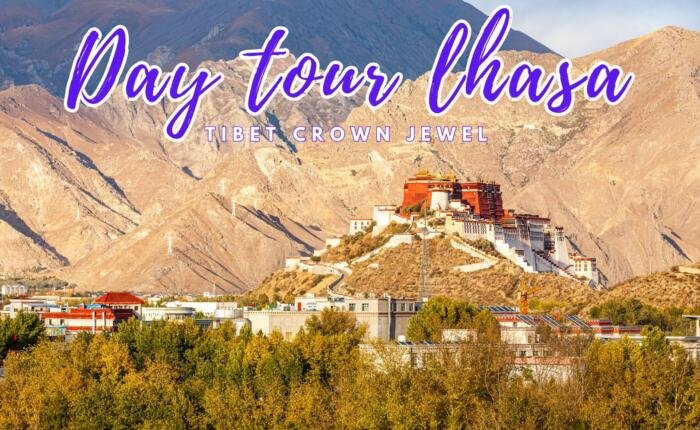The Ultimate Kailash Adventure: 14 Days of Spiritual Discovery in Tibet
– Embrace the Magic of the Himalayas!
Introduction to the Sacred Journey
Embark on a life-changing 14-day journey through Tibet’s breathtaking landscapes with the Mount Kailash Kora Trek. This pilgrimage is not just a trek but a journey of spiritual awakening, offering a mix of adventure, cultural insights, and profound spiritual experiences. Discover the secrets of Tibet’s most sacred peak and immerse yourself in an adventure like no other.
Daily Wonders of the Mount Kailash Trek
Each day of this extraordinary trek presents a new opportunity to connect with the essence of Tibetan culture, spirituality, and history. Be prepared to witness the unmatched natural beauty that intertwines seamlessly with the rich tapestry of faith and traditions of this ancient land.
Cultural and Spiritual Exploration
The journey takes you beyond the usual trekking experience. Explore sacred monasteries, ancient palaces, and mystical sites dotting the rugged Tibetan terrain. These cultural landmarks are not just tourist attractions but are active centres of spiritual life, offering insights into the centuries-old traditions and practices of Tibetan Buddhism.
Discover Tibet’s Natural Beauty
The Mount Kailash Kora Trek is also a celebration of nature’s wonders. From tranquil lakes that reflect the serenity of the surroundings to mystical earth forests resonating with stories of ancient civilizations, the trek is a feast for the senses. The diverse landscapes, ranging from arid plains to lush valleys, add to the trek’s allure, making it a photographer’s paradise.
Trekking with Purpose: A Path to Enlightenment
This is more than a trek; it’s a spiritual journey. Following the footsteps of countless pilgrims, you will traverse paths that have been a source of enlightenment and blessings for ages. Each step on this sacred path brings you closer to understanding the deeper meanings of life and spirituality.
Embrace the Journey of a Lifetime
The Mount Kailash Kora Trek is an invitation to experience the spiritual heart of Tibet. Whether you seek adventure, cultural enrichment, or spiritual growth, this trek promises an enriching experience that will stay with you long after you’ve returned home. Join this remarkable journey and embrace the opportunity to explore both the tangible and intangible wonders of Tibet.
Day 1: Arrival and Welcome at Lhasa Airport
Today marks the beginning of our adventure. Travellers from around the globe will be arriving at Lhasa Gonggar Airport. Our team will be on hand to greet you upon your flight’s arrival. We’ll provide a warm welcome and transport you to your hotel in Lhasa. Here, you’ll have the opportunity to relax and settle in, preparing for the exciting journey ahead.
Day 2: Exploring the Heart of Lhasa – Potala Palace, Jokhang Temple, and Barkhor Street
Morning: Visit to Potala Palace
Our day begins with a visit to the awe-inspiring Potala Palace, the world’s highest ancient palace complex. Perched atop Red Mountain at an altitude of 3,700 meters, this Winter Palace of the Dalai Lama stands as a testament to Tibetan wisdom and history. Its towering structure and majestic presence are truly a sight to behold. Accompanied by a professional tour guide, you’ll delve into the rich history and spiritual significance of the palace.
Afternoon: Jokhang Temple and Spiritual Walk
In the afternoon, we head to the sacred Jokhang Temple, a revered site in Tibetan Buddhism with a history spanning over 1,300 years. Your guide will lead you through its spiritual heritage. Don’t forget to take a clockwise walk around the temple – a traditional practice for good luck and a deeper connection with Tibetan Buddhism.
Leisurely Exploration: Barkhor Street
The day’s journey continues with a stroll through Barkhor Street. This bustling marketplace is perfect for picking up unique handicrafts and souvenirs. Alternatively, find a cosy tea house, relax by the window with a cup of Tibetan tea, and enjoy the serene atmosphere under Lhasa’s clear blue skies. It’s an ideal setting to unwind and reflect.
Important Reminder:
Please note that tickets to Potala Palace must be purchased in advance and are subject to specific visiting times. Our itinerary will be adjusted accordingly. Security checks are mandatory for entry, dangerous items are not permitted, and photography inside the palace is prohibited.
Day 3: Scenic Journey from Lhasa to Shigatse via Yamdrok Lake and Karola Glacier
Morning: Departure and Visit Yamdrok Lake
After breakfast, we embark on our journey to Shigatse, one of Tibet’s most significant cities. The day’s first highlight is a visit to the breathtaking Yamdrok Lake, located at an altitude of 4,400 meters. This stunning high-altitude lake is renowned for its mesmerizing beauty. Local belief holds that circling the lake brings blessings. The lake, with its brilliant azure waters, is encircled by majestic snow-capped mountains, including the towering Norchen Kangsang Snow Mountain, standing at 7,191 meters.
Midday: Encounter with Karola Glacier
As we travel along the shoreline of Yamdrok Lake, our next stop is the Karola Glacier, famously featured in the movie “Red River Valley.” This easily accessible glacier offers a serene and majestic sight, set against the backdrop of towering peaks.
Afternoon: Exploration of Gyantse and Visit to Palkor Choede Temple
Continuing our adventure, we pass through Smila Mountain, a site known for its tradition of hanging prayer flags. Then we reach Gyantse, an ancient city with over 600 years of history and a strategic link between front and back Tibet. Our exploration includes a visit to the Gyangtse Dzong Martyr Site and the remarkable Palkor Choede Temple. This unique Buddhist temple is famous for its exquisite murals, sculptures, and an array of 100,000 pagodas.
Evening: Arrival in Shigatse
Our journey concludes with our arrival in Shigatse, Tibet’s second-largest city. In summer, the city is adorned with vibrant yellow and green barley fields, creating a picturesque landscape of wheat waves under a vast blue sky and fluffy white clouds. Here, you’ll experience the perfect blend of natural beauty and rich cultural heritage.
Day 4: Journey from Shigatse to Everest Base Camp
Morning: Departure from Shigatse and Visit to Tashilhunpo Temple
Your day begins early in Shigatse with a visit to the Tashilhunpo Temple, the residence of the Panchen Lama. As the largest temple in Shigatse, it’s a vibrant centre of worship and scripture study, buzzing with monks deeply engaged in their religious practices. Inspired by this spiritual atmosphere, we’ll then set off for the iconic Everest Base Camp, stopping for lunch in Latse.
Afternoon: Traversing Mountain Passes to Everest Base Camp
The journey to Everest Base Camp takes us through two significant mountain passes: Zola Pass at 4,600 meters and Gyatso La Pass at 5,248 meters. These passes signal our official entry into the Everest Base Camp Scenic Area. Prepare to be awestruck by the Himalayan landscape, especially the majestic Gyawula Mountain.
Evening: Arrival and Overnight at Everest Base Camp
Our route winds through the mountains, leading us to the tent area of Everest Base Camp. As evening approaches, watch as the camp is bathed in golden sunlight, creating a breathtakingly beautiful scene against the backdrop of the towering peaks. As the sun sets behind the mountains, the sky transforms into a spectacular celestial show with stars twinkling above and the Milky Way stretching across the night sky. This is the perfect setting for intimate conversations or quiet reflection under the starlit heavens. This enchanting experience at one of the world’s most iconic destinations is truly a moment to cherish.
Day 5: Everest Base Camp to Saga via Shishapangma and Pekutso
Morning: Sunrise at Everest and Visit to Rongbuk Monastery
Begin your day early to witness the first rays of sunshine over Mount Everest. The mountain, illuminated in the morning light, presents a breathtaking sight, akin to a resplendent goddess amidst the grandeur of the Himalayas. Our next stop, weather permitting, is Rongbuk Monastery, the world’s highest monastery, belonging to the Nyingma sect and situated at an altitude of around 5,100 meters.
Despite its frigid location, the monastery’s surroundings are strikingly beautiful. Here, you have the opportunity for silent reflection, recitation of Tibetan Buddhist sutras, and a profound inner dialogue, making it an enriching experience in multiple ways.
Afternoon: Westward Journey to Saga County
With unforgettable memories, we head westward to Saga County. The journey offers a dramatic landscape where the straight highway seems to stretch into the heavens. Along the way, you may spot yaks grazing in the ochre-yellow earth and stone grasslands, with snow-capped mountain peaks and white clouds forming a seamless panorama.
Evening: Arrival in Saga and Views of Shishapangma and Pekutso
On our route, we encounter the majestic Shishapangma, the world’s 14th highest peak at 8,012 meters, peacefully coexisting with the serene Pekutso Lake at 4,590 meters. The lake, reflecting the sky’s vibrant blue, is a tranquil haven for wildlife, including wild donkeys, black-necked cranes, and red-billed gulls. The serene beauty of Pekutso Lake, resembling a piece of the blue sky on Earth, invites contemplation and wonder.
Overnight Stay in Saga
Our day’s journey concludes with an overnight stay at a three-star hotel in Saga, offering comfort and rest after a day filled with natural wonders and spiritual reflection.
Day 6: Journey from Saga to Tarchen via Drongba and Paryang
Morning: Departure and Scenic Drive through Shaga Valley
As the sun begins to rise, we set off early for Tarchen, journeying through the enchanting Shaga Valley. Nestled between the Gangdise Mountains and the Himalayas, the valley unfolds like a vibrant ribbon, weaving through the mountains and revealing the mysteries of nature. The vast grasslands, the leisurely pace of Tibetan life, and the seamless blend of sky, earth, and people paint a picture of a harmonious existence.
En Route: Views of Namunani Peak and Manasarovar Lake
Our route offers a distant view of the majestic Namunani Peak, standing at 7,694 meters. This enigmatic snow-capped mountain is a spiritual beacon, attracting devotees from Nepal, India, and China who journey here following in the Buddha’s footsteps. At the mountain’s base is the sacred Manasarovar Lake, renowned for its crystal-clear azure waters, often referred to as the “Medicine Lake of the West” in Xuanzang’s “The Western Regions of the Tang Dynasty.” Pilgrims flock to this holy lake, engaging in ritual bathing and baptisms, seeking redemption and spiritual elevation.
Evening: Arrival in Tarchen
Our journey continues through picturesque landscapes, eventually bringing us to Tarchen. Here, we settle in for the night at a comfortable three-star hotel, providing a restful base for the next leg of our spiritual and scenic adventure.
Overnight Stay in Tarchen
In Tarchen, our day concludes with an overnight stay, offering an opportunity to rest and reflect on the day’s profound experiences. The town serves as a gateway to more of the region’s spiritual and natural wonders, setting the stage for further exploration in the days ahead.

Day 7: Holy Mountain Kailash Kora – Trek from Tarchen to Zhire Temple
Morning: Departure and Beginning of the Trek
We start our day early from Tarchen, embarking on the sacred Kailash Kora. The journey into the valley begins with an environmentally friendly bus ride, setting the stage for our mountain hike. The valley, alive with yaks and horses, offers a glimpse into the local culture. For those needing assistance with heavy luggage, porters are available (note that horse riding, yak riding, and porter services are not included in the tour fee). As you set off on foot, take a moment to adjust your breathing and prepare yourself to explore this pristine land.
The Trek: Scenic Vistas and Cultural Insights
Throughout your trek, you’ll be accompanied by stunning views of blue skies and snow-capped mountains. The path winds along rivers, showcasing nature’s artistry at its purest. You’ll catch sight of the impressive Gang Rinpoche Peak, with its towering presence and layered terrain. This trek offers a unique perspective, reshaping your understanding of nature’s grandeur.
Afternoon: Arrival at Zhirepu Temple
After approximately 13 kilometres of uphill trekking, we reach Zhirepu Temple. Here, amidst the fluttering colourful prayer flags, you’ll take a well-deserved rest. The day ends with an overnight stay at Zhire Guest House, which provides a serene setting to fall asleep, surrounded by deep faith and awe for the natural world.
Evening: Rest and Reflection at Zhire Guest House
As you settle into the Zhire Guest House, take the time to reflect on the day’s journey. The peaceful surroundings offer a perfect backdrop for meditation or quiet contemplation, allowing you to connect deeply with the spiritual essence of the Kailash Kora.
Day 8: Holy Mountain Kailash Kora – Trek from Zhire Temple to Zutru Temple
Morning: Resuming the Trek
After a restful night, we resume our hike with renewed energy. Today’s segment of the Kailash Kora takes us to the trek’s highest point, the Dolma La Pass, standing at 5,630 meters. The journey to the pass is both spiritually and physically challenging. You’ll witness many devout Tibetans along the way, bowing in prayer, adding to the route’s sacred atmosphere. Be cautious as the ice-covered path can be slippery, and the sound of gravel underfoot echoes through the valley.
Midday: Spiritual Ascent and Refreshment at Dolma La Pass
The sacred path, trodden by countless Tibetans over time, connects the elements of ice, snow, and gravel with their devotion. Though demanding, the trek offers a chance to pause at a teahouse to gather strength. Upon reaching Dolma La Pass, you’ll be greeted by fluttering prayer flags and the stunning sight of Tuoji Tso, a serene lake resembling a piece of white jade, nestled among the mountains.
Afternoon: Descent to Zutru Temple
The descent from Dolmala Pass is less strenuous and leads to our destination for the day. As the day’s trek concludes, we arrive at Zutru Guest House. This leg of the journey allows for contemplation and appreciation of the surrounding natural beauty and spiritual significance.
Evening: Stay at Zutru Guest House
Our evening at Zutru Guest House offers a chance to relax and reflect on the day’s experiences. The guest house provides a comfortable setting to rest and prepare for the continuation of the Kailash Kora in the following days.
Day 9: Completing the Mount Kailash Kora and Journey to Zada
Morning: Final Leg of Kailash Kora
On this third day of our ascent, as we descend in altitude, the landscape around us undergoes a beautiful transformation. From the stark white of snow, we gradually enter a realm of lush emerald green. The area starts to teem with life, small animals scurrying amidst the shrubs, adding a vibrant energy to the surroundings. Along the way, stacks of Mani stones, painted in various colours, decorate the landscape, creating a scene reminiscent of monks absorbed in deep prayer.
Noon: Completion of Kailash Kora and Transfer to Tour Bus
By noon, having covered the final 10 kilometres of our trek, we concluded the Kailash Kora. A sense of accomplishment fills the air as we reach the meeting point where our tour bus awaits to greet us, the newly accomplished mountain climbers.
Afternoon: Departure for Zada
With the Kailash Kora behind us, we embark on the next leg of the journey to Zada. This journey marks a transition from the spiritual trekking experience to exploring more of Tibet’s diverse landscapes and cultural heritage.
Evening: Arrival and Accommodation in Zada
Our day concludes with our arrival in Zada, where we check into a comfortable hotel. This restful environment offers the perfect setting to relax and rejuvenate after the rigorous and fulfilling journey of the past few days.
Overnight Stay in Zada
In Zada, we spend the night in a hotel, providing a peaceful retreat. It’s an ideal time to reflect on the spiritual journey completed and anticipate the adventures that lie ahead in this unique and enchanting region of Tibet.
Day 10: Exploring the Ancient Wonders of Guge and Tuolin in Zada
Morning: Zada’s Earth Forest Landform and Visit to Guge Kingdom Ruins
We start our day in Zada County, famous for its extraordinary soil forest landform, a unique and captivating landscape in the Ali region. This special landform, shaped by ancient geological forces, features sediment layers carved into towering “trees” within the soil forest. As we journey through this terrain, it feels like walking amidst the feet of giants.
Our exploration continues with a visit to the Guge Kingdom Ruins, an intriguing and historically rich site in Ali. Founded in the 9th century by descendants of the Tubo Dynasty, the Guge Dynasty once ruled over the Ali region and played a crucial role in the revival of Tibetan Buddhism. The ruins of the Guge Kingdom are a sight to behold, with palaces, temples, towers, pagodas, and caves spread across a steep slope. Over 300 houses and 800 caves dot the area, with palaces and castles towering over 300 meters, a testament to the kingdom’s past grandeur.
Afternoon: Visit to Tuolin Temple
We then visit the Tuolin Temple, a site with a history spanning over 900 years. As the first Buddhist temple built by the Guge Kingdom in the Ali region, Tuolin Temple’s architecture and Buddhist statues feature a blend of Indian Kashmir, Ladakh, and Nepalese influences. Surrounding the temple are over 100 pagoda ruins, while the ancient murals inside offer a window into the temple’s splendid past.
Evening: Arrival and Accommodation in Tarchen
After a day filled with historical discoveries, we return to Tarchen and check into a three-star hotel. This comfortable accommodation provides a restful setting to unwind and reflect on the day’s profound experiences.
Overnight Stay in Tarchen
Our night offers a peaceful conclusion to a day of exploring some of Tibet’s most significant and mysterious historical sites. It’s an opportunity to absorb the rich cultural heritage and spiritual legacy of the region.
Day 11: Scenic Journey from Tarchen to Saga
Morning: Departure from Tarchen
After enjoying breakfast, we set out from Tarchen, heading back towards Lhasa. The journey presents a captivating shift in scenery, featuring the plateau’s unique landscape. The route is adorned with icy peaks, snow ridges, and cliffs, a picturesque tableau that has long captivated explorers. This stunning landscape invites admiration and exploration, offering an intimate connection with the natural world.
Travelling Through the Northern Tibetan Grasslands
As we travel, we’re treated to the breathtaking views of the northern Tibetan grasslands. This expanse of wilderness is a testament to the rugged beauty of Tibet, showcasing the serene and untamed spirit of the region.
Arrival in Saga: Gateway to the Himalayas and Gangdise Mountains
Our destination for the day is Saga, located in the northwest of Shigatse Prefecture. Saga serves as a vital connection point in the region, with National Highway 219 linking it to major destinations like Shigatse, Lhasa, Ali, Purang, Jilong County, and Nepal.
Evening: Accommodation in Saga
Upon arrival in Saga, we check into a three-star hotel, providing a comfortable and relaxing environment after a day of travel. This stay allows us to rest and rejuvenate in preparation for the next leg of our journey. Our night in Saga offers a chance to reflect on the day’s scenic travel and the unique beauty of the Tibetan plateau.
Day 12: Saga to Shigatse – A Journey Through the Northern Tibetan Grassland
Scenic Drive through the Tibetan Grassland
Our journey today from Saga to Shigatse isn’t marked by specific tourist attractions. Instead, the day is about embracing the natural beauty that surrounds us. As we travel, paradise-like scenery unfolds on either side of the road. This journey is an opportunity to open your eyes and heart to the wonders of nature.
Arrival in Shigatse
Upon arrival in Shigatse, we checked into a three-star hotel. This comfortable accommodation provides a restful end to a day spent marvelling at the picturesque landscapes of the Tibetan plateau.
Day 13: Shigatse to Tashilhunpo Monastery and Return to Lhasa
Morning: Visit to Tashilhunpo Monastery
After breakfast, we begin our day with a visit to the Tashilhunpo Monastery in Shigatse. This significant religious site is closely associated with the Panchen Lama and is one of the six major monasteries of the Gelug (Yellow) Sect of Tibetan Buddhism. Historically, it also served as a political centre in Tibet. The monastery is especially famous for housing the world’s largest seated bronze Buddha statue, the “Jamba Buddha” (Maitreya Buddha), which stands at a staggering height of 28 meters.
Afternoon: Return Journey to Lhasa
Following our visit to Tashilhunpo Monastery, we embarked on our return journey to Lhasa. The drive back offers time to reflect on the spiritual and cultural insights gained from our visit to the monastery.
Evening: Arrival and Accommodation in Lhasa
We conclude our day with an arrival in Lhasa, where we check into a three-star hotel. This stay offers comfort and relaxation, providing a peaceful setting to rest after our travels. Our night in Lhasa marks the end of another enriching day of exploration. The hotel provides a serene environment to unwind and prepare for the continuation of our Tibetan adventure.
Day 14: Farewell Tibet – Lhasa Airport Departure
Departure from Lhasa
As our 14-day Mount Kailash Kora journey concludes, today is the day for your departure. We’ll assist you in reaching Lhasa Airport, where you can catch a flight or board the Qinghai-Tibet Railway, beginning your journey back home.
Reflecting on the Journey
This pilgrimage has been an extraordinary experience, a tapestry of tradition, devotion, and breathtaking natural beauty. The Mount Kailash Kora trek is more than an adventure; it’s a transformative journey that leaves an indelible impression on your heart and soul.
Closing Thoughts
As we part ways, we hope that the awe and reverence for the majestic landscapes and profound spirituality of Tibet remain with you. This sacred pilgrimage has offered a glimpse into the mystical wonders of Tibet, creating memories that will last a lifetime. We wish that your spirit is uplifted and your heart enriched by the magic of Mount Kailash and the captivating landscapes of Tibet.
Invitation for Future Adventures
We warmly invite you to join us again to explore more of Tibet’s mystical wonders. Each journey promises new insights, adventures, and memories to cherish. May the magic of Tibet stay with you, inspiring your future travels and adventures. Safe travels and heartfelt farewells until we meet again!








